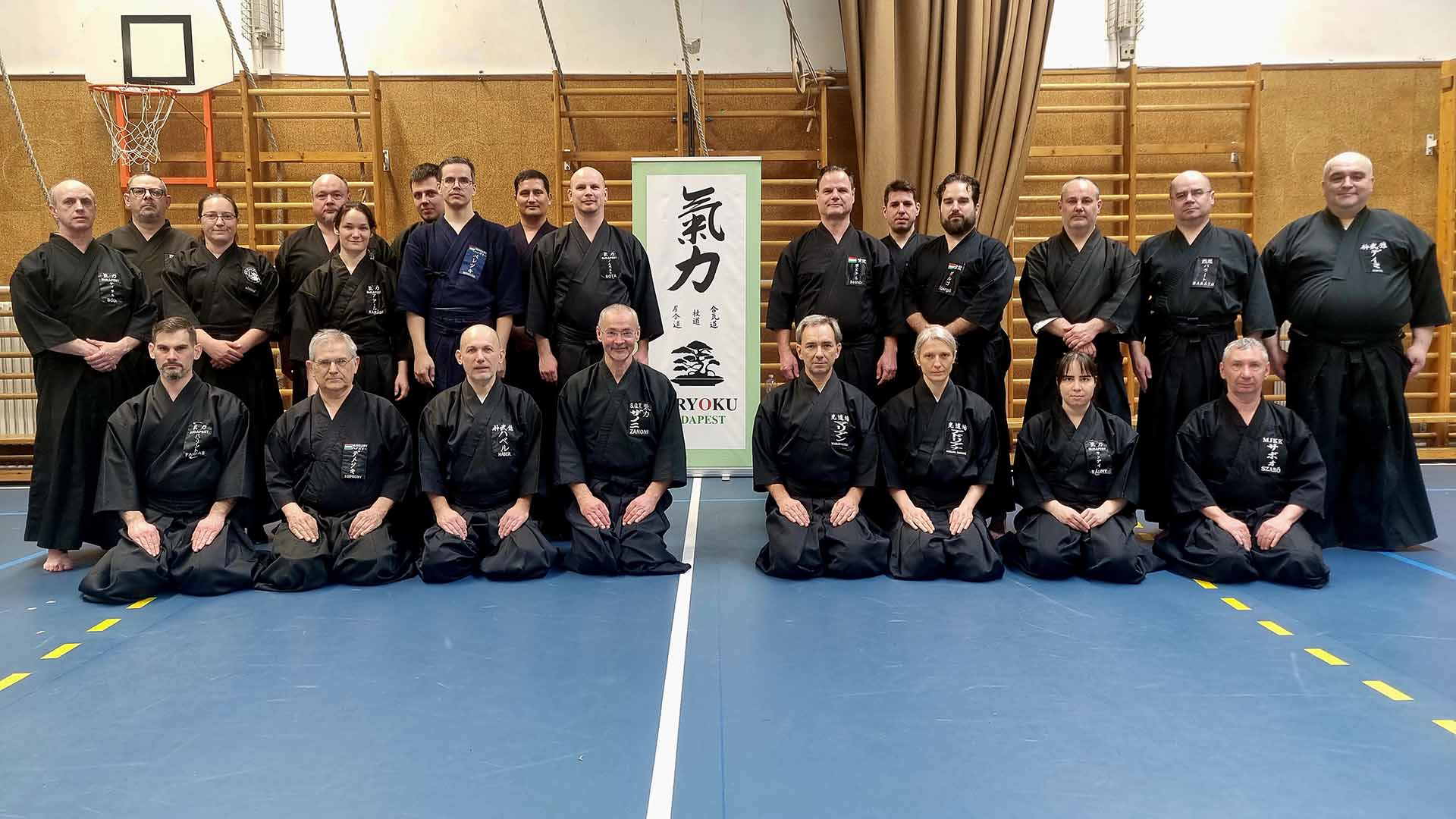Versione Italiana qui
By Bálint Farkas
First of all, let me express my gratitude for the opportunity to share my impressions on Kiryoku blog about the Winter seminar with Claudio Sensei in Budapest.
The seminar itself was held over three days in Budapest from February 2nd to 4th and consisted of both Koryu and ZNKR seitei. It was great to see many people (at the Hungarian level) who wanted to learn and grow in both principles. Personally, I was impressed by the dedication of our new budo-friend who arrived from Mexico to learn. It is challenging to express everything in writing, but I will try to do so.

On the first day, we had a Koryu session as a warm-up for the weekend. Claudio Sensei showed us cutting practices, some chuden, and okuden katas, but with a focus on soft and smooth sword handling. He highlighted that performing the katas and cuts at the chuden and okuden levels is impossible without soft sword handling. Many people, including myself, are ‘in love’ with the sound of their swords; therefore, cutting is hard and quick but is actually still very stiff. However, changing angles and cutting properly is not possible without the soft handling of the sword. Some new participants still tried to learn the ‘choreography’ of katas, but it’s beneficial not to develop this bad habit. As always, everybody was happy with yama oroshi, and personally, I enjoyed iwanami, which holds a special place in my heart.
On the second day, we switched to seitei. Sometimes it is considered a bit too ‘formal’ a set of katas. It seems everything is written in the seitei book but it’s easy to forget the Japanese handout with ‘extended advisories’ as well as Hachidan Senseis’ explanations. Claudio Sensei added these points as well. By incorporating these, one can find further depth in seitei. We spent 8 hours practicing 5 katas plus some points in tsuka-ate. It required careful attention and focus from participants. Sensei highlighted the correct sequence of movements to make a coherent and effective iai. Some of us hurried with the footwork or couldn’t wait to cut. These can cause incoherent moves or even missing the opponent entirely. On top of this, rhythm is also important (and not just speed!). Sometimes, because of struggling with the correct posture or feet, one can forget to cut immediately once everything is set. I made similar mistakes. As I observed myself, I felt this habit made the kata resemble a Batman ‘comic-book’ where everything is frozen after an action until the next picture. Even though I have a feeling inside, I make fluid movements. I can’t list here every point I heard, but Claudio Sensei provided many sophisticated details that can be useful not only in seitei but also in Koryu.
On the last day, we went through the Koryu shoden set. I have been participating in the Muso Shinden Koryu seminar in Turin since 2014, and I learn new details every time. Maybe because, as a beginner, everything is new to me. Not surprisingly, the same happened here in Budapest. We had participants from a few different dojos, so Claudio Sensei first contextualized the possible tiny differences between some teachers but clarifying that they were just ‘variations’ rather than deviations. Then he emphasized that he follows and teaches according to Ishido Sensei’s line. He also shared newly learned fine details from Ishido Sensei that we learned in Japan in September.
Just to mention a few points of what we learned: One can feel they are making appropriate ‘seme’ by appearing serious and pushing the sword forward, but in fact, we have to keep it until we make the opponent lose balance and seize this tiny moment to execute furikaburi and cut. This is not as obvious as it seems at all. This can be observed already in shohatto. Furthermore, the use of the body is also important, and stepping forward needs to be ‘reasonable’. In other words, a result of moving the body, not just walking forward on knees. In Ryuto, we learned the importance of footwork because it’s a popular kata, and the movements are very eye-catching. This can divert attention from footwork, which is an essential part of this kata.
Once I managed to become slightly more familiar with a specific movement in the past, it became a bit more comfortable. This event reminded me that if I want to improve my iai, it makes me feel uncomfortable, even if it is painful in some movements, but it’s necessary for change. It makes me suspicious that if my kata is comfortable for me, it’s most probably very basic, or even I have only a superficial understanding of it. In the end, we practiced a few standing okuden to enjoy and remind ourselves of the importance of soft and smooth movements.
In conclusion, I found many new dimensions in some movements that have been mentioned earlier but didn’t manage to observe them in this depth. It was a great pleasure to learn all these. I wish you all good hunting for similar iaido details.
Thank you very much for teaching.
Bálint Farkas












